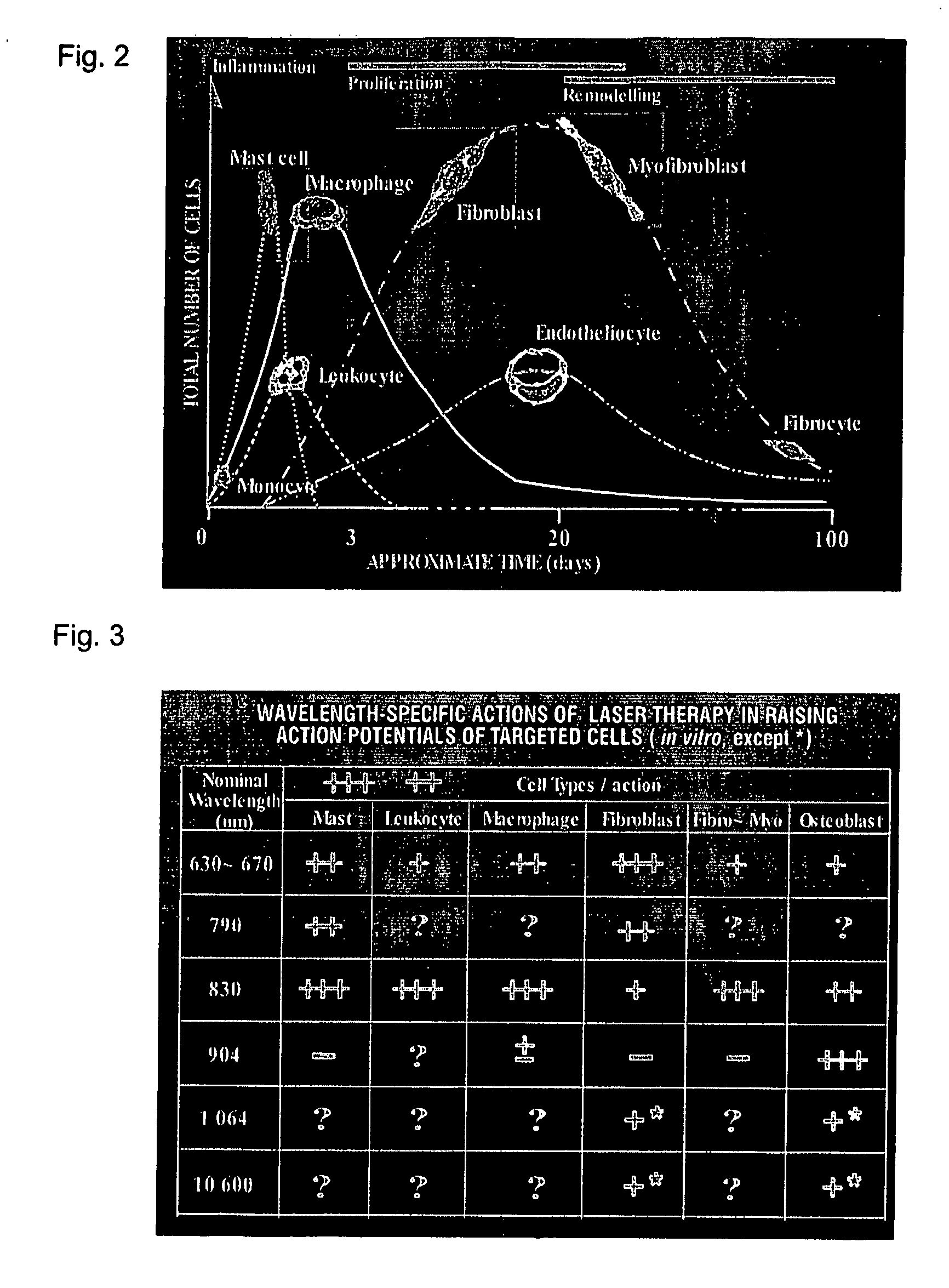Phototherapeutic Method and Apparatus
a technology of phototherapy and apparatus, applied in the field of phototherapy, can solve the problems of patient downtime, hypertrophic or atrophic scarring, and wounds that do not heal as well, and achieve the effect of enhancing an aesthetic treatmen
- Summary
- Abstract
- Description
- Claims
- Application Information
AI Technical Summary
Benefits of technology
Problems solved by technology
Method used
Image
Examples
first embodiment
[0077]In a first embodiment of the invention, wound healing is accelerated by a course 20 of discrete phototherapy sessions each using a selected one of red or infrared light. A flow chart of the course is shown in FIG. 4. For each session, a selection 12 is made as to whether that session will use red or infrared, according to a pre-determined programme. A phototherapy session using red light 14 or near-infrared light 16 is then performed according to the selection 12. If the session is the last in the programme, as determined at step 18, then the course if finished; otherwise, the next session within the programme is performed, after an interval determined by the programme.
[0078]The red light may be substantially monochromatic, non-laser light with a wavelength in the range 600 to 700 nm, preferably at or around 633 nm. The near-infrared light may be substantially monochromatic, non-laser light with a wavelength in the range 800 to 910 nm, preferably at or around 830 nm.
[0079]The ...
second embodiment
[0080]In another embodiment of the invention, as illustrated in FIG. 5, an aesthetic treatment 22 is enhanced by a first course of phototherapy 20a performed before the treatment 22 and a second course of phototherapy 20b performed after the treatment 22.
[0081]A combination of red (633 nm) and infrared (830 nm) light delivered pre- and post-laser ablation may reduce the downtime experienced by the patient. The use of temporally- and spectrally-selective combinational phototherapy (usually red and infrared light) can enhance aesthetic treatments which rely on photothermolysis, or mechanical damage via thermal ablation, coagulation, vaporisation, carbonisation or modification of tissue. This enhancement can result in an aesthetically improved result or appearance, reduced recovery time, and reduced exposure to infection or pain, thus benefiting the patient.
[0082]Treatment Protocols
[0083]Examples of methods of treatment according to the second embodiment will now be described.
[0084]Eac...
example 1
[0091]i) Two weeks before treatment—three IR phototherapy sessions evenly spaced through one week
[0092]ii) One week before treatment—three red phototherapy sessions evenly spaced through one week
[0093]iii) Aesthetic treatment
[0094]iv) One IR phototherapy session per week for a period of 3 weeks after treatment.
PUM
 Login to View More
Login to View More Abstract
Description
Claims
Application Information
 Login to View More
Login to View More - R&D
- Intellectual Property
- Life Sciences
- Materials
- Tech Scout
- Unparalleled Data Quality
- Higher Quality Content
- 60% Fewer Hallucinations
Browse by: Latest US Patents, China's latest patents, Technical Efficacy Thesaurus, Application Domain, Technology Topic, Popular Technical Reports.
© 2025 PatSnap. All rights reserved.Legal|Privacy policy|Modern Slavery Act Transparency Statement|Sitemap|About US| Contact US: help@patsnap.com



